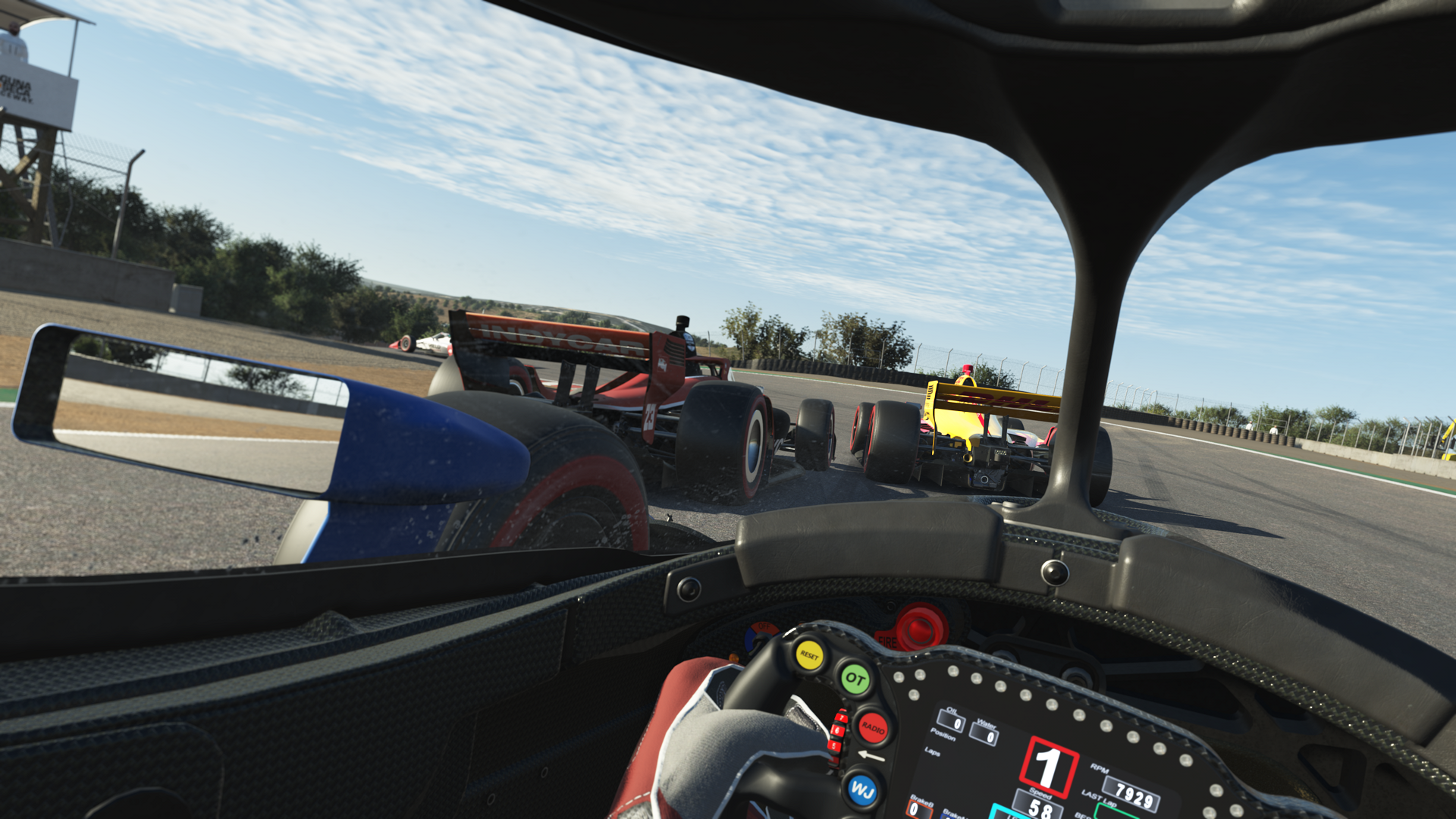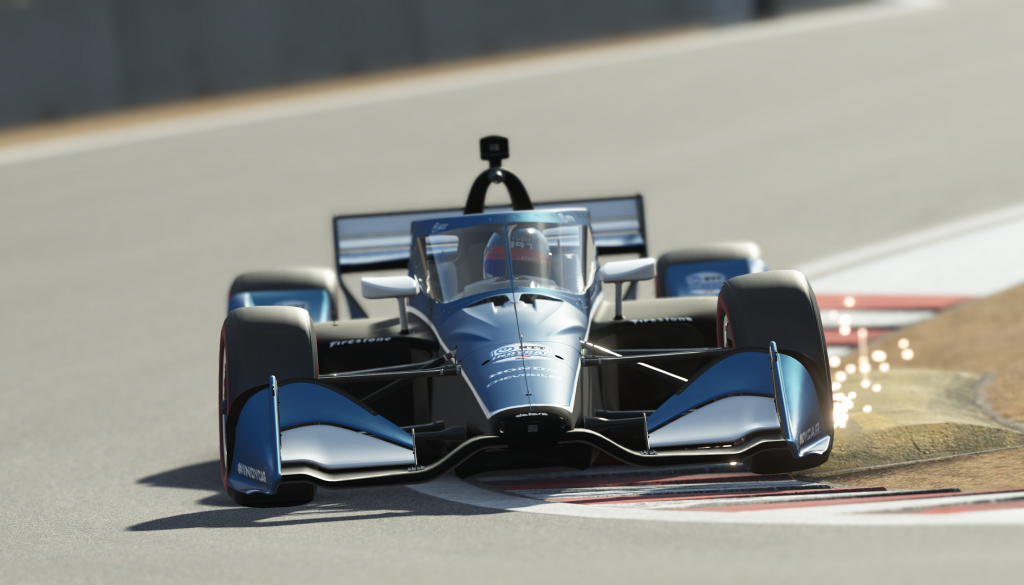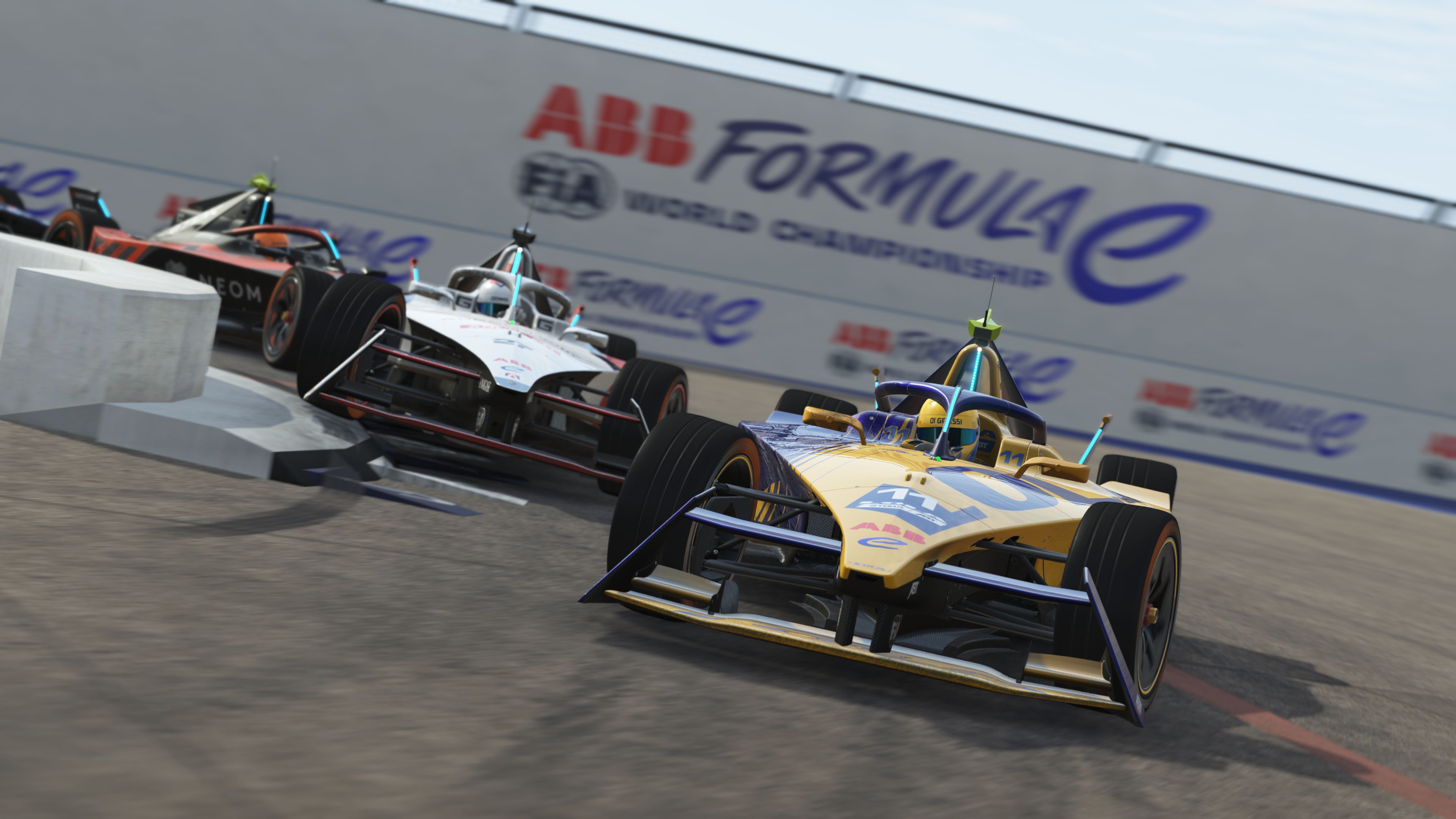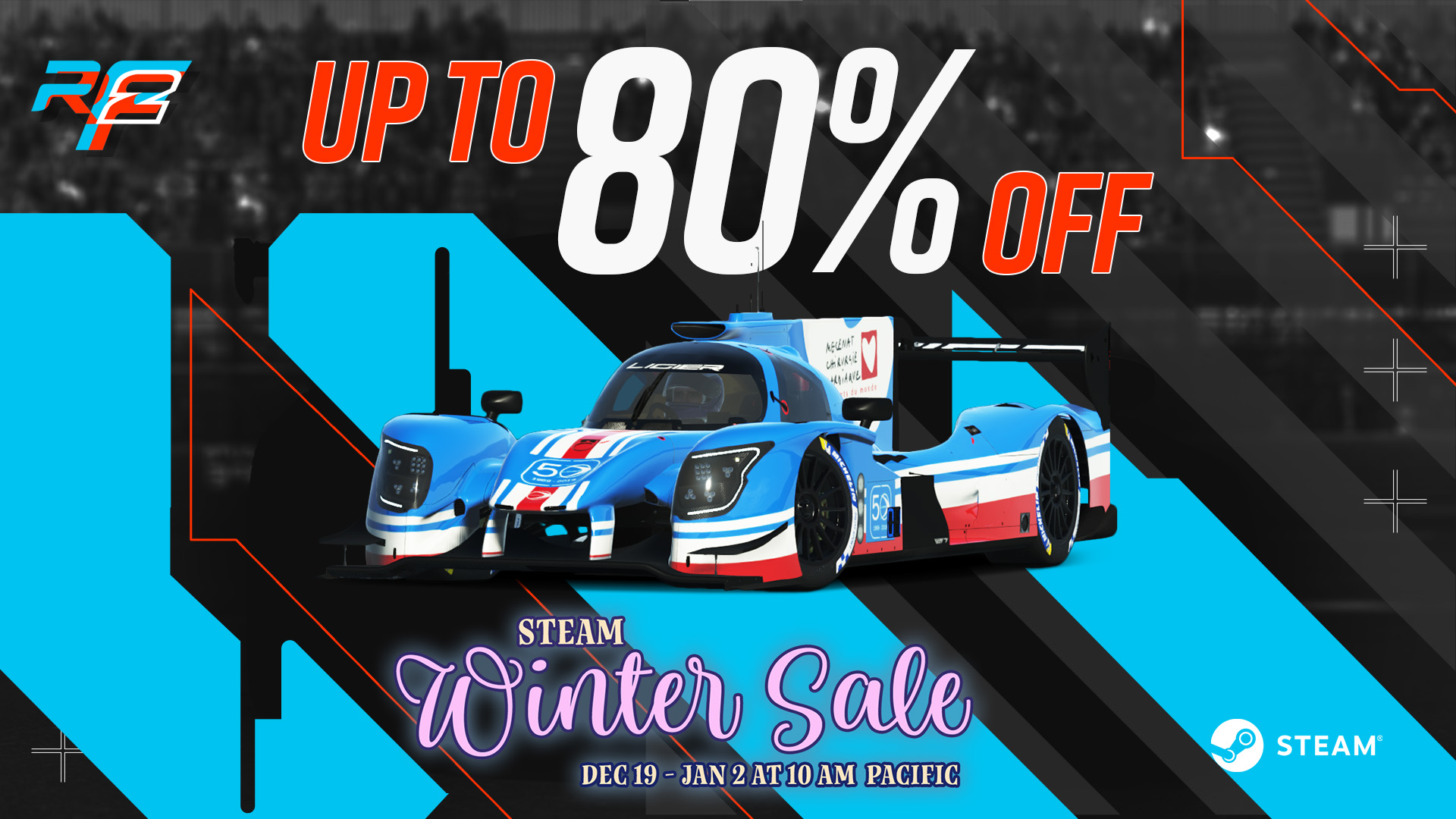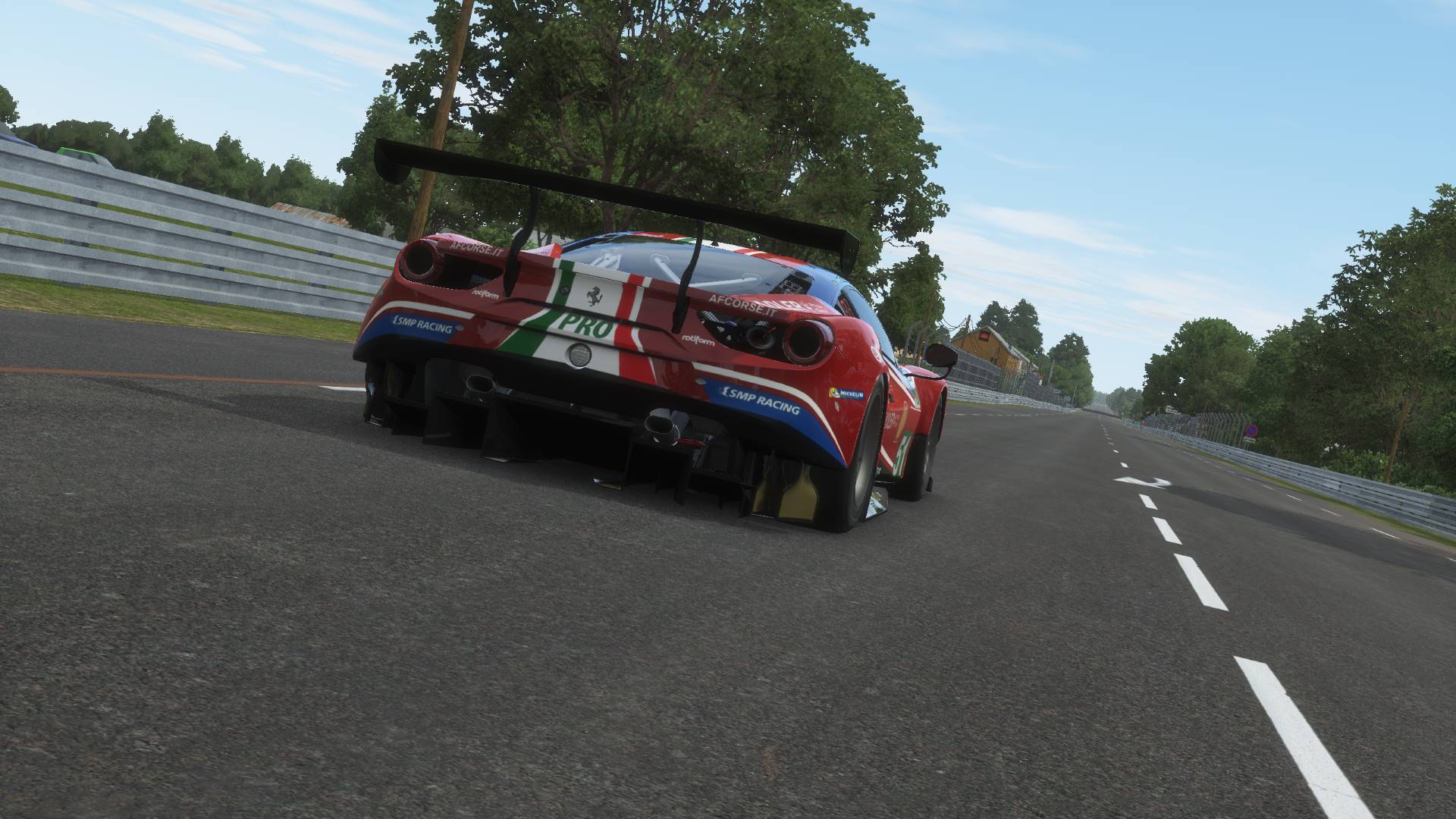North American open wheel motorsport is riding the crest of a popularity wave in recent years, as the premier NTT IndyCar Series continues to provide some of the closest, most hard fought and exciting racing anywhere in the world. Enjoying an influx of talented drivers and close competition on outstanding circuits, IndyCar racing is seemingly stronger than it has ever been, which makes the inclusion of the 2022 Dallara IR-18 IndyCar in rFactor 2 all the more exciting, and the subject of our latest ‘Spotlight on…’ feature article.
History
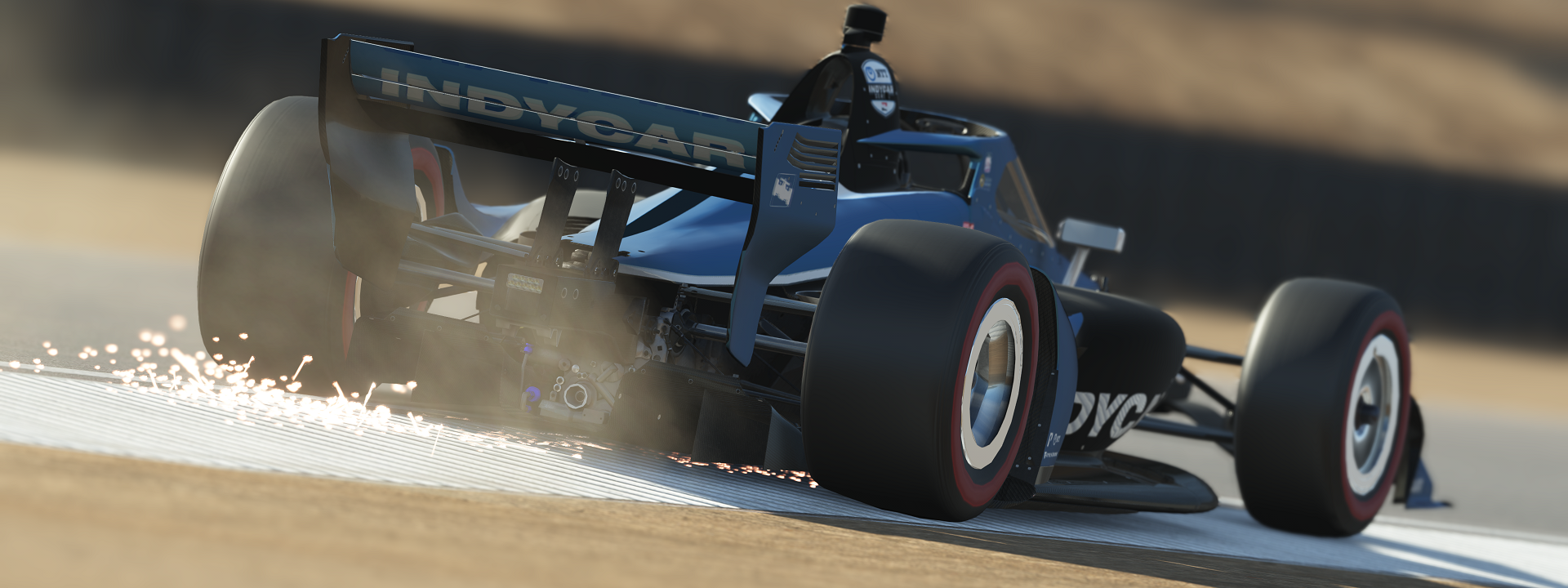
Dallara IR-18 INDYCAR | Steam Store: CLICK HERE
IndyCar racing has had a tumultuous history since the difficult parting with the then CART championship during the mid 1990s, growing considerably from those early, difficult days into what is now regarded as one of the most challenging and exciting open wheel competitions in the world.
Starting out life under the ownership and vision of then Indianapolis Motor Speedway owner Tony George, IndyCar as we know it today was created as an alternative power play breakaway from the established CART Series, splitting in two the main North American open wheel series, in what was at the time considered to be a risky, even foolish endeavour at the height of popularity for CART in the US.
Those early years running under the Indy Racing League banner would go some way to proving the naysayers right, as many of the big name teams and drivers elected to stay with CART and their established series, rather than branch out into the then oval only racing category. One key ingredient playing into the hands of IRL would be the annexation of the crown jewel Indy 500 race, a bitter blow to rival CART, and an event that even a few powerhouse CART teams would find themselves looking to enter on a one off basis during the month of May.
Despite firmly coming off as second best in the early years of the split, IRL would gradually gather momentum, and more importantly the teams and drivers, as CART (now called Champ Car), slowly began to fall apart at the seams. Dwindling grids, a disinterested public and the loss of major star names would put pay to the Champ Car era of US open wheel racing, with the two series eventually forming a joint collaboration in time for 2008 – finally reuniting US open wheel racing under the same banner, and beginning what would become a second shot at stardom for the IndyCar championship.
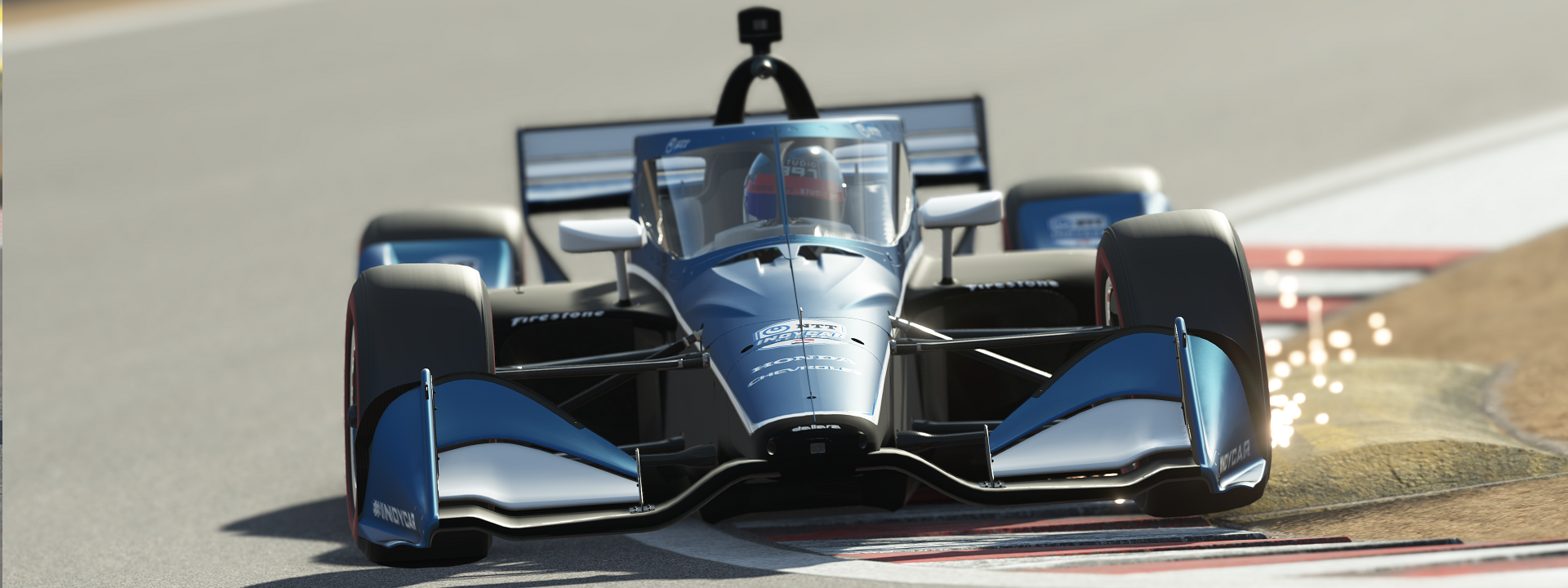
The 12-year divergence of the two top open wheel championships in North America would end in fine style in 2008, as many of the top US teams and drivers returned to what would now be called the IndyCar Series – adding a strength in depth not seen state side since the final peak years of CART. A healthy 19 races would be lined up for the new campaign, eight to be contested on road and street courses, and 11 on oval circuits, including of course the Indianapolis 500.
It would take several years for the wounds to fully heal within the category, however, by the time IndyCar introduced the newly updated DW12 chassis in time for 2012, following the tragic fatality of fan favourite driver Dan Wheldon the previous season, IndyCar was very much on the path to becoming the series we know today. The DW12, despite its rather dramatic looks, would prove to be a great addition to the championship, keeping the same close racing enjoyed prior to the update, while vastly increasing driver safety, especially on ovals. The DW12, in spec form from Dallara, would remain in service until the 2015 racing season, whereupon IndyCar opened up the opportunity for teams to introduce aerodynamic updates developed by Honda and Chevrolet respectively, the two active engine manufacturers of the category. These changes had an unintended consequence of disadvantaging Honda, who couldn’t produce the same performance as their rival Chevrolet, and following two years of development the specifications would be frozen for 2017, before IndyCar introduced a new spec chassis ahead of the 2018 season.
Thus, the IR-18 was born. Still developed by Dallara, but offering a much more modern and aggressive design than the previous DW12, the IR-18 immediately proved to be a hit with teams, especially due to the cost saving measures introduced with the updated spec chassis and standardized safety components.
In keeping with the modern trend of increased driver head protection, the IR-18 would be retro fitted with a cockpit safety device called the Aeroscreen for the 2020 season. Developed by Red Bull technologies and following a similar path as the Halo in Formula One, the key difference with the Aeroscreen is the fighter jet style full cockpit wraparound screen, something that has already proved to be a valuable addition to the series in the two short years it has been in operation.
Technical Specs
- Length: 5123.18mm
- Width: 1943.1mm to 1917.7mm minimum (1917.7mm minimum and 1949.45mm maximum for ovals) measured outside rim to rim
- Wheelbase: 2984.5mm to 3086mm
- Engine: Honda HI21R Indy-V-6, Chevy IndyCar V6
- Capacity: 2.2 litre (134.25 cubic inches) V-6, twin-turbocharged
- Output: 550-700 horsepower, depending on turboboost pressure used at track
- Transmission: XTRAC #1011 gearbox. Six forward gears, one reverse gear, Mega-Line Assisted Gear Shift (paddle-shift)
The Car
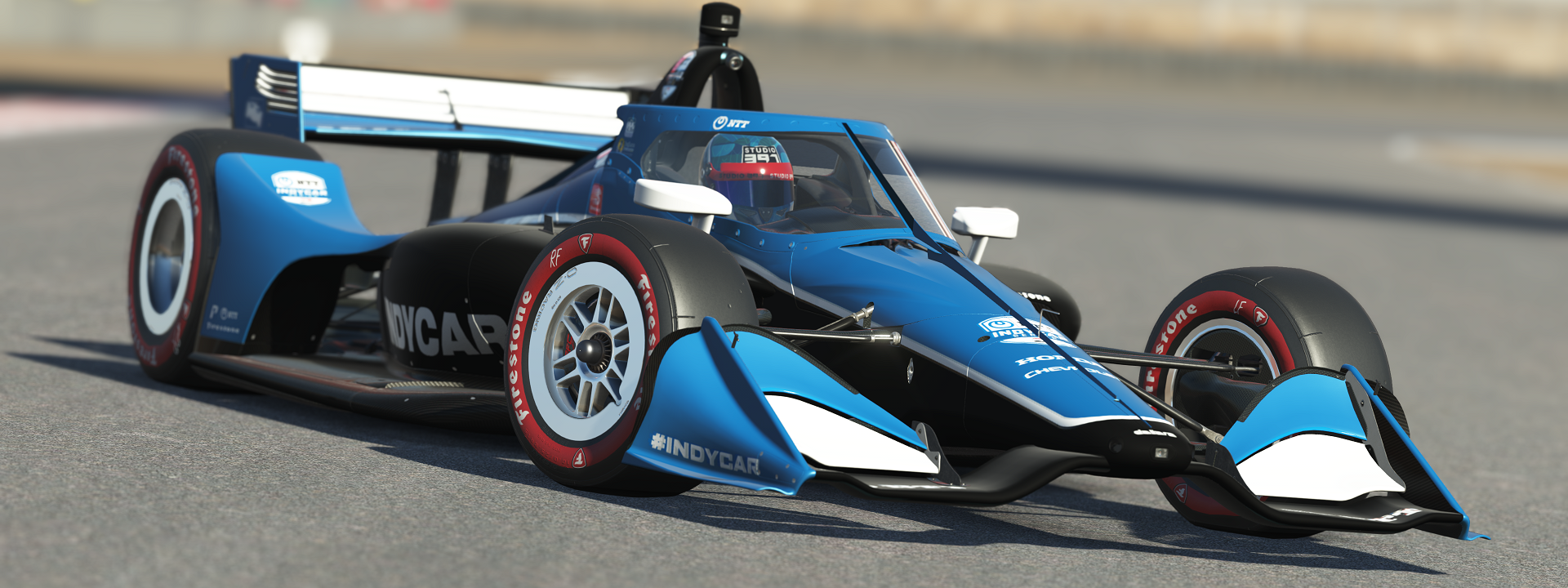
2022 Q1 Content Pack | Steam Store: CLICK HERE
Born of a desire to bring down costs, retain the spectacle of high performance racing and deliver a safe environment for the drivers, the Dallara IR-18 has, quite frankly, proven itself to be a huge success on all fronts – remaining the base chassis of the series throughout the current boom years, and providing solid foundations on which IndyCar continues to grow.
Much like traditional single seat race cars, the Dallara runs with a gear shift paddle mechanism behind the steering wheel, allowing drivers to quickly move up and down the gearbox without the need to perform heel and toe shifts or use the clutch in any way. As for the steering wheel itself, although certainly a step forward in terms of technicality than the previous generation of car, it would be fair to say that a modern IndyCar is far removed from the likes of Formula One in terms of technical detail and adjustable in-race technology.
The main wheel design in IndyCar features an LCD screen with various pieces of information presented to the driver, such as lap time, time delta and key temperature readouts – as well as the now standard shift light sequence and flag warning light configurations. In terms of technology, from here drivers can make a number of changes to the car on track, in particular with two IndyCar specific variables – weight jacker and push to pass.
Weight Jacker
Used exclusively on ovals, the weight jacker (marked as ‘wedge’ in the control profile settings page in sim) allows drivers an opportunity to change the balance of the car throughout the course of an oval race. Basically, a weight jacker is a hydraulic ram that can be engaged from within the cockpit of the car, raising or lowering the car depending on driver preference.
Traditionally, the ram is placed atop of the coilover spring, and when activated will create distance between the spring and damper housing. When activated on the right rear suspension, as is desirable due to the nature of ovals only featuring left-hand turns, the weight jacker will cause diagonal load to place more weight on the left-front tyre, which will transfer to a reduction in understeer for the driver.
Conversely, retracting the ram will have the opposite effect, reducing diagonal weight on the left-front, and in turn reducing the oversteer faced by the driver.
Push to Pass
As with weight jacker, Push to Pass is also circuit configuration specific – this time, only made available to drivers on road course and street circuit layouts. Essentially, Push to Pass is an overtaking tool developed by IndyCar to boost the power of the car for a limited period, with a view to helping drivers pull alongside a rival and perform an overtake. Unlike similar systems elsewhere however, in IndyCar, all drivers have free rein to use this feature at any point on the circuit, so although it can help the overtaking driver, it is just as powerful as a defensive tool to retain track position.
Push to Pass is normally allocated to teams as 200 seconds of boost in performance, available throughout the lap/race, in any amount of deployment. Power wise, Push to Pass offers around 40hp additional performance.
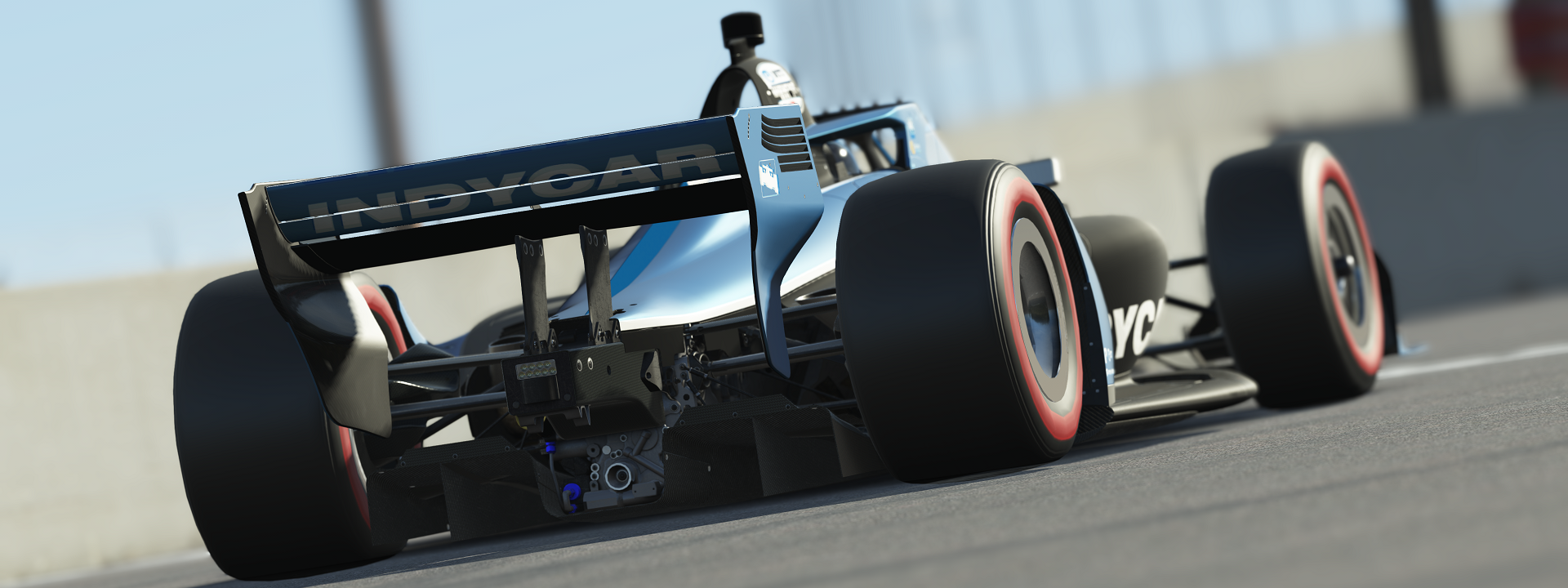
On the visual front, one of the most immediately noticeable differentiators between the IR-18 and other open wheel cars is the inclusion of the dramatic Aeroscreen device – a relatively new safety measure introduced by IndyCar to reduce the likelihood of drivers being struck by debris out on track. Unlike the Halo used in Formula One and other junior single-seater championships, the Aeroscreen offers a wrap around protective ‘window’ that covers the full driver cockpit spectrum. Developed by Red Bull Technologies and featuring a screen produced by long time IndyCar sponsor PPG, the Aeroscreen has proven an effective means of protection for drivers since its introduction in 2020, although the additional weight high on the car has dramatically changed the balance and behaviour characteristics of the current Dallara machine, which has led to some significant changes in the competitive pecking order of late.
Another interesting challenge introduced by the Aeroscreen is how the new device behaves in wet conditions – something that IndyCar has rarely had to deal with in recent seasons. Unlike the open nature of the Halo, and by the fact the Aeroscreen does not have anything like windscreen wipers for the drivers to deploy, the build up and run off of rain and spray from the track makes for an interesting challenge for drivers to overcome – another aspect that is unique to IndyCar, and another experience tool that anyone looking to hunt for good results in this car needs to be aware of when taking to the virtual track in anger.
The Dallara IR-18 is a car we at Studio 397 are very excited to have brought to rFactor 2, and as you would expect, we have worked very closely with IndyCar to ensure this representation is as close to the real thing as possible. Lots of power, not much downforce and a thoroughly exciting driving experience, if you like open wheel race cars and aren’t afraid of a challenge, then this is one for you!
Dallara IR-18 INDYCAR | Steam Store: CLICK HERE
Previous Spotlight Features
- Chevrolet Corvette C8.R GTE
- McLaren MP4/8
- Circuit de la Sarthe
- Daytona International Raceway
- Porsche 911 RSR GTE
Dallara Ir-18 INDYCAR – Available now in rFactor 2
